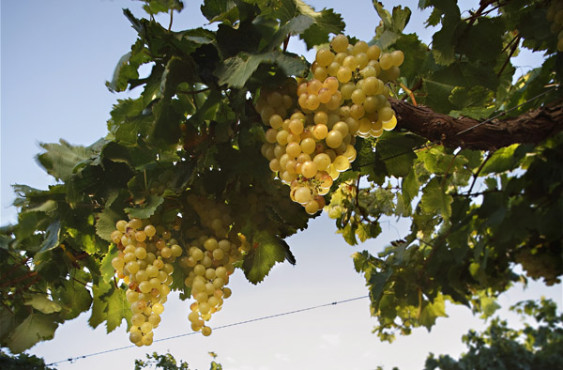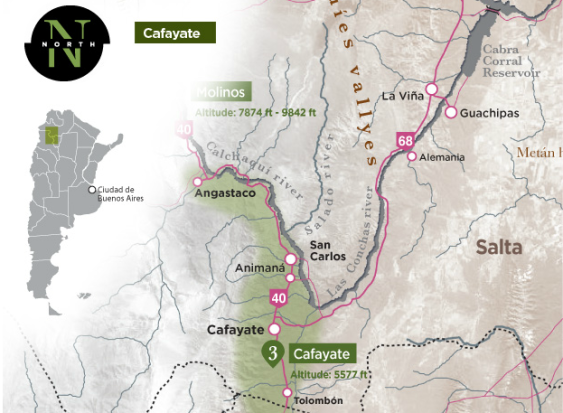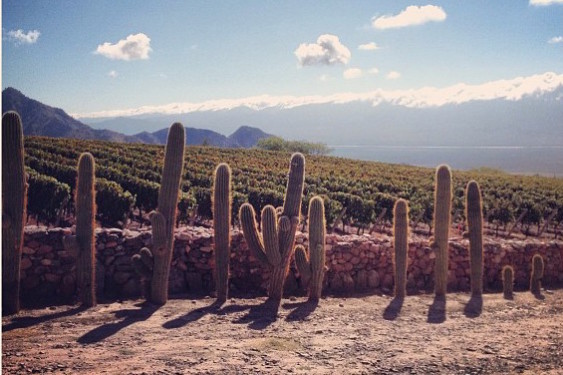Last week, we talked about Mendoza and Argentina’s flagship grape variety, Malbec. But while Malbec has been a big hit on the world wine scene thanks to the beautiful, bold red wines they make from it in Argentina, the country also produces a particular white variety, Torrontés, you don’t find too many other places. And it is quickly gaining its own loyal following.

Argentina’s other flagship wine, Torrontés, is a white variety. Photo source: Wines of Argentina.
Think of it this way. Malbec is kind of like the Elizabeth Taylor of Argentine wine – voluptuous, seductive, almost overpowering at times. Torrontés is like the Debbie Reynolds – approachable, cheerful and with a lot of pep. And all us wine consumers get to be the Eddie Fisher in this love triangle.

Torrontés is like the Debbie Reynolds to Malbec’s Liz Taylor. Image source: Getty.
Like Pinotage, Torrontés is actually a hybrid, though it came about from a cross between the widespread Mission grape and Muscat of Alexandria, with the earliest known.
Thanks to the characteristics of each of its progenitors, the wines made from it are very aromatic and floral (I usually get a lot of jasmine and white rose aromas), with lovely stone fruit flavors like apricot and nectarine. I find I tend to compare it to Viognier. It doesn’t have the sometimes biting acidity you get in some other white wines like Albariño or Sauvignon Blanc, nor the mouth-coating creaminess of some New World Chardonnays. Instead, it’s a vivacious but satisfying drink, perfect as a pre-dinner aperitif or as an accompaniment to an alfresco lunch.

Argentina’s best Torrontés is grown around Cafayate in the Salta region of Argentina’s northwest. Image source: Wines of Argentina.
The main region in Argentina where Torrontés is grown is up in the northwest and is called Salta around a town called Cafayate. The land around here kind of looks like the desert around Sedona –lots of red rocks and high-altitude windswept plateaus, and sandy soils. All that translates into a nice concentration of flavors and freshness in the grapes as they take some time to mature fully and evenly.

The landscape around Cafayate is reminiscent of the American Southwest.
Torrontés is also grown in Mendoza and San Juan, though many of these are consumed domestically and are valued as young-drinking wines not meant for aging.
As the weather continues to get warmer, start looking for Torrontés on your wine store’s shelves and pick up a bottle for an aperitif, or to pair with a light dish like grilled fish or seafood this spring. Better yet, pick up a few bottles, since most are a bargain at under $15!

If you visit Cafayate, there are beautiful places to stay, like the Patios de Cafayate historical hotel, set amongst its own vineyards.
Here are a couple to look out for…
Crios de Susana Balbo Torrontés: Probably Argentina’s best-known female winemaker, Balbo produces a fantastic range of wines, including this enticing white.
El Porvenir de Cafayate: A great example of Torrontés produced from nearly 60-year-old vines on sandy soils. The winery itself is in a historic building and you can see old carob-wood casks that they used to use to store and age wines in these parts.
Finca las Nubes: A deliciously crisp version of Torrontés from one of Salta’s most respected artisanal winemakers.

